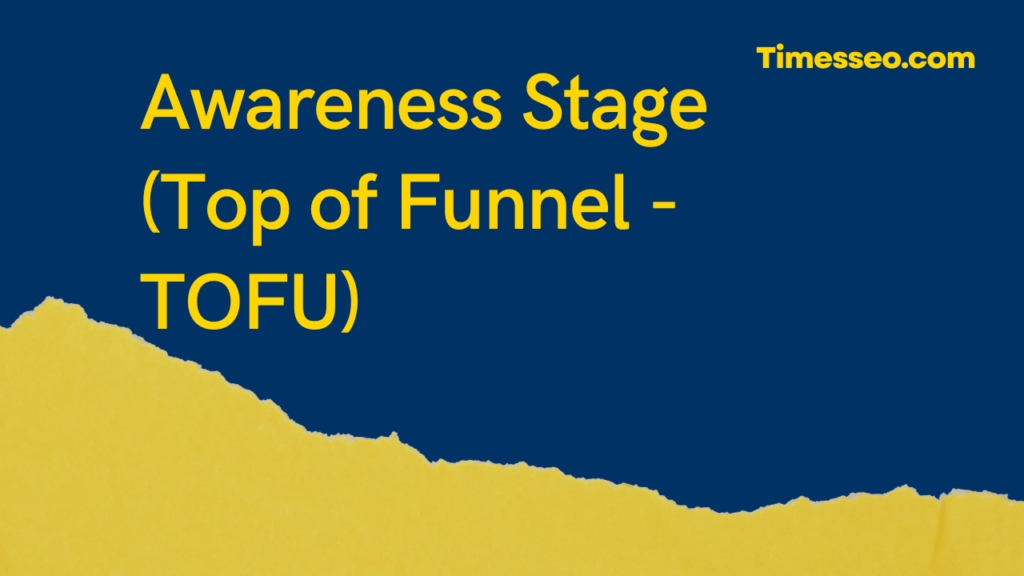
Top SEO Keyword Ideas for Each Stage of the Sales Funnel
Discover the most effective SEO keyword ideas tailored for every stage of the sales funnel—awareness, consideration, and decision. This blog post guides you through selecting high-intent keywords that match user behavior at each step, helping boost your organic traffic and conversion rates. Perfect for marketers and business owners looking to align their content with search intent.
Table of Contents
Introduction
Introduction to Sales Funnel and SEO
What is a Sales Funnel?
A sales funnel represents the process your potential customers follow on their way to making a purchase. It starts with them learning about your brand and continues through several stages until they eventually become loyal buyers. Each phase of this journey plays a crucial role in guiding their decision-making. It typically includes:
- Awareness (TOFU): At this initial stage, the customer begins to recognize a challenge or need and starts looking for general information or solutions.
- Consideration (MOFU): They start looking for solutions.
- Decision (BOFU): They’re ready to buy or take action.
Why SEO Matters in the Funnel?
SEO is your silent salesperson. It helps bring users organically to your site at every funnel stage. The right keywords at the right time = higher conversions.
Aligning Keywords with Buyer Intent
Buyer intent shifts as users move down the funnel. Understanding this is key to choosing keywords that attract the right traffic—whether they’re just browsing or ready to hit “buy now.”
Awareness Stage (Top of Funnel - TOFU)
Understanding the Audience's Needs
At this stage, users may not even know they need your product. They’re looking for answers to questions or trying to understand a problem.
Best TOFU Keyword Strategies
Use informational keywords to answer “what,” “why,” and “how” questions.
Informational Keywords:
- “What is [product or concept]”
- “How to solve [problem]”
- “Why do I need [solution]”
Blog Topic Ideas for Awareness
- “10 Signs You Need a Project Management Tool”
- “Why Your Website Isn’t Getting Traffic”
- “How to Build a Strong Brand Online”
TOFU Tools: Google Trends and AnswerThePublic
Both tools can help you discover trending questions and keyword variations your audience is searching.
Consideration Stage (Middle of Funnel - MOFU)
Targeting a More Engaged Audience
Users now know they have a problem—they’re looking for the best solution, comparing products, reading reviews, and evaluating their options.
Best MOFU Keyword Strategies
Use comparison and “best” type keywords to target searchers in the evaluation phase.
Comparison Keywords:
- “X vs Y”
- “Compare [product]”
- “[Product] alternatives”
“Best” and “Top” Keywords:
- “Best [category] tools for [industry]”
- “Top-rated [product] 2025”
Product Category Pages Optimization:
Optimize category-level pages using broad keywords like “affordable laptops for students” or “best vegan skincare products.”
Decision Stage (Bottom of Funnel - BOFU)
Targeting Transactional Intent
This is the money stage. Users are ready to buy, sign up, or take the next step. Your job? Show them the path with no friction.
Best BOFU Keyword Strategies
Use transactional and branded keywords to close the deal.
Branded Keywords:
- “[Brand Name] pricing”
- “Buy [Brand Name]”
- “[Brand] reviews 2025”
“Buy,” “Get,” “Try” Action Words:
- “Buy wireless headphones online”
- “Try CRM software free trial”
- “Get same-day delivery”
Product and Service Landing Pages:
Create optimized pages for specific product lines or service offerings using transactional phrases.
Keyword Research Tools and Tactics
SEO Tools for Funnel-Based Keywords
- SEMrush: Great for keyword intent
- Ahrefs: Excellent for content gaps and competitor research
- Ubersuggest: Budget-friendly for beginners
- Google Keyword Planner: Free and reliable
Long-Tail vs Short-Tail Keywords
- Long-Tail Keywords: These are more specific keyword phrases, like “Best digital camera for low light photography,” that target a narrower audience with clear intent.
- Short-Tail Keywords: “digital camera”
Long-tail wins for intent and conversion—especially in BOFU.
How to Analyze Keyword Difficulty and Intent
Use tools that score keyword difficulty and analyze SERP features. A keyword with lots of product pages ranking = BOFU intent.
Mapping Keywords to Content Formats
TOFU Content Formats:
- Blog posts
- Listicles
- Infographics
- How-to guides
MOFU Content Formats:
- Product comparisons
- Whitepapers
- Case studies
- Expert roundups
BOFU Content Formats:
- Product pages
- Testimonials
- Pricing pages
- Free trial/sign-up pages
Keyword Examples by Funnel Stage
Real-Life Examples (B2B and B2C)
B2B SaaS Example:
- TOFU: “What is CRM software?”
- MOFU: “Best CRM tools for startups”
- BOFU: “Buy HubSpot CRM plan”
B2C eCommerce Example:
- TOFU: “How to choose running shoes”
- MOFU: “Nike vs Adidas for runners”
- BOFU: “Buy Nike Air Zoom Pegasus 40”
Local SEO Keywords Per Stage
- TOFU: “Common plumbing problems in [city]”
- MOFU: “Best plumbers in [city]”
- BOFU: “Hire emergency plumber [city] now
Common Mistakes in Funnel Keyword Strategy
Targeting Wrong Intent
Using “buy now” keywords in awareness blogs just confuses and drives people away.
Ignoring Long-Tail Opportunities
Long-tail keywords bring qualified leads. Don’t ignore them in favor of just high-volume terms.
Overstuffing and Irrelevant Optimization
Stuffing unrelated keywords for ranking? Bad move. It hurts UX and SEO.
Conclusion
SEO is not just about traffic—it’s about the right traffic at the right time. By mapping keywords to each stage of your sales funnel, you attract prospects with the right intent, build trust, and increase conversions. Start with TOFU to spark interest, MOFU to build relationships, and BOFU to close the deal. A smart keyword strategy is like laying breadcrumbs along the path of your customer journey—helping them find you, trust you, and buy from you.
Frequently Asked Questions
Focus on long-tail, product-specific keywords at BOFU and informational blogs at TOFU to attract and convert.
Re-evaluate quarterly. Market trends and search behavior change fast—keep your strategy fresh.
Yes, but the context and content format must match the user intent at each stage.
Absolutely! They show high purchase intent and usually lead to better conversion rates.
Search it on Google. If you see blog posts—it’s TOFU. Comparison pages? MOFU. Product listings? BOFU.
Table of Contents
Popular Posts
-
 Affordable Technical SEO Audit for Small Business: A Complete Guide26 Jun 2025 Blog
Affordable Technical SEO Audit for Small Business: A Complete Guide26 Jun 2025 Blog -
 How to Get an Affordable Technical SEO Audit for Small Business27 Jun 2025 Blog
How to Get an Affordable Technical SEO Audit for Small Business27 Jun 2025 Blog -
 The Ultimate Local SEO Audit Checklist for Startups28 Jun 2025 Blog
The Ultimate Local SEO Audit Checklist for Startups28 Jun 2025 Blog -
 Local SEO Audit Checklist for Startups: A Beginner’s Guide28 Jun 2025 Blog
Local SEO Audit Checklist for Startups: A Beginner’s Guide28 Jun 2025 Blog -
 Top On-Page SEO Audit Steps for Service Websites Every Business Should Know29 Jun 2025 Blog
Top On-Page SEO Audit Steps for Service Websites Every Business Should Know29 Jun 2025 Blog -
 Technical SEO for WordPress: The Ultimate Beginner’s Guide01 Jul 2025 Blog
Technical SEO for WordPress: The Ultimate Beginner’s Guide01 Jul 2025 Blog -
 The Impact of On-Page SEO Audit Steps for Service Websites on UX01 Jul 2025 Blog
The Impact of On-Page SEO Audit Steps for Service Websites on UX01 Jul 2025 Blog -
 Technical Mobile SEO Audit Tips for Developers02 Jul 2025 Blog
Technical Mobile SEO Audit Tips for Developers02 Jul 2025 Blog -
 Complete SEO Backlink Audit Guide for Better Google Rankings03 Jul 2025 Blog
Complete SEO Backlink Audit Guide for Better Google Rankings03 Jul 2025 Blog -
 Boost Your Rankings with Technical SEO for WordPress01 Jul 2025 Blog
Boost Your Rankings with Technical SEO for WordPress01 Jul 2025 Blog






